Collective Microgrid is an urban redevelopment masterplan strategy for the BDD Chawls of Worli in Mumbai, India. The aim of the project is to involve citizens’ participation in an energy productive ecosystem. The project is based on a research of energy production methods and the understanding of each of them. This generates the possibility of using the inputs and outputs of each of the systems to retrofit each other and guarantee minimum loss. The main strategies are: to use the unbuilt spaces in the existing space for centralized energy infrastructure as starting points of the project, then to generate participative housing to empower citizens by including their actions in the energy production and finally to develop the masterplan through time generating phases. This will allow the energy infrastructures to generate income for the citizens to finance their new housing. This project can be a model for new energy self-sufficient and productive neighborhoods because it becomes productive by processing a burden like waste and gives back clean water and energy to the city.
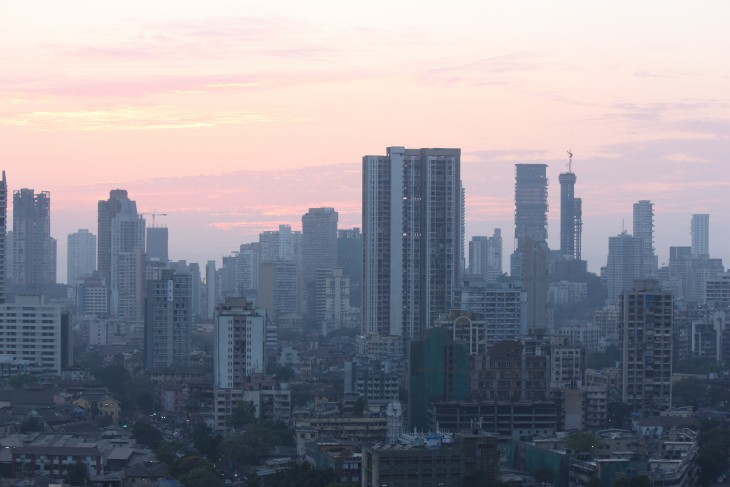
The opportunity of urban redevelopment in a privileged location in megacity like Mumbai directs the project towards a non-convenient solution. Taking into account that water and energy provision and waste management in Mumbai is a big concern for both the national government and the world’s community, a large scale project must include solutions for these issues. When conceiving a productive neighborhood in Mumbai, energy systems can be thought as metabolic processes that can enhance the capacities of the cities and solve many issues at the same time. On this process, a research about different energy production systems and their characteristics was very relevant to the conception of a general masterplan intervention in Worli.
Aside of taking into account if energy systems come from renewable or non-renewable resources, the capacity and scale of the system were important parameters that were used as inputs to decide on an energy scenario suitable for the area of intervention. After mapping and analysing all the systems, four were chosen and thus generate an energy-based masterplan. However, before conceiving the urban form of the neighborhood, we took into consideration all the inputs an outputs of the chosen systems, These allowed us to think about the reach and limit of each system. Also, about the backstage process of the differente systems, which at the end generated a closed loop of energy that uses the inputs and outputs of the systems to create a complex metabolic closed cycle, where losses are kept to the minimum.
The aim of this process is to rethink the production of energy. Nowadays, these processes are invisible to urban dwellers because they occur outside the city and function in a large scale. What if these systems co-exist with citizens and allow them to participate in the production of energy? This scenario would empowe citizens by giving them independence from the systme, allow them to generate income, save money and be productive and proactive in the city they live in.
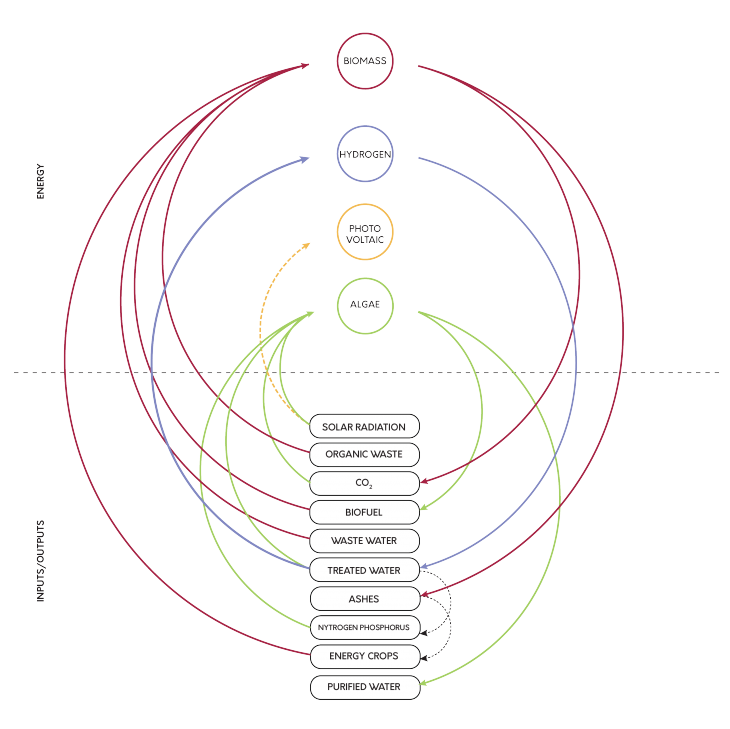
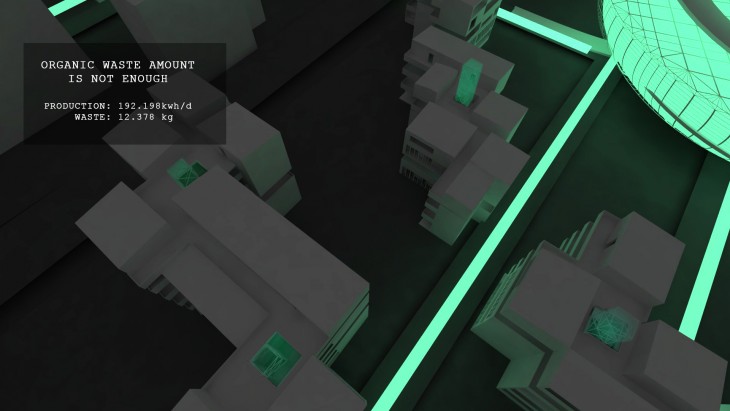
HOW IS THE FUTURE ENERGY INFRASTRUCTURE IN CITIES?
The cores of metabolism in the project will act as attractor points both for infrastructure and activities. To accomplish this, the centralized system plant like biomass or hydrogen will be merged with different facilites in order to enable people to visualize the processes of energy production as they carry out daily activities like going to school or shopping for groceries.
These cores will also have a unique role in the urban planning scheme of the masterplan, since they will provide inputs and outputs to housing, hence units will be develop around them in order to integrate the whole system.
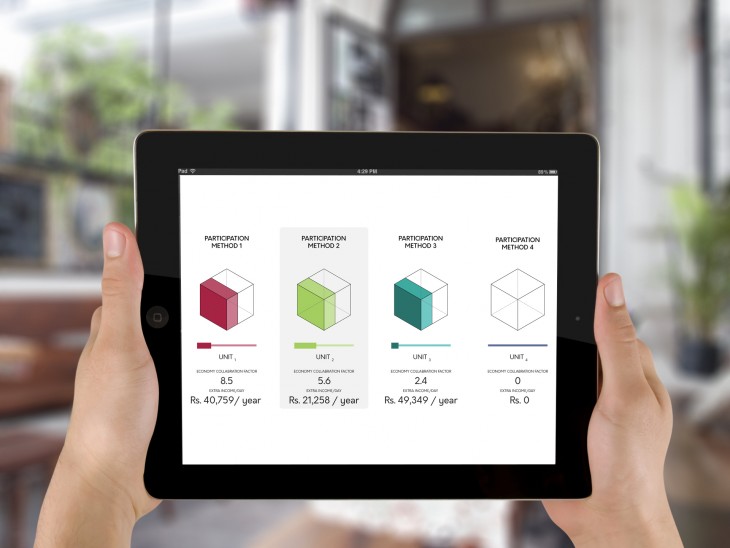
HOW CAN CITIZENS CONTRIBUTE TO AN ENERGY PRODUCTIVE NEIGHBORHOOD?
The cores of metabolism in the project will act as attractor points both for infrastructure and activities. To accomplish this, the centralized system plant like biomass or hydrogen will be merged with different facilites in order to enable people to visualize the processes of energy production as they carry out daily activities like going to school or shopping for groceries.
These cores will also have a unique role in the urban planning scheme of the masterplan, since they will provide inputs and outputs to housing, hence units will be develop around them in order to integrate the whole system.
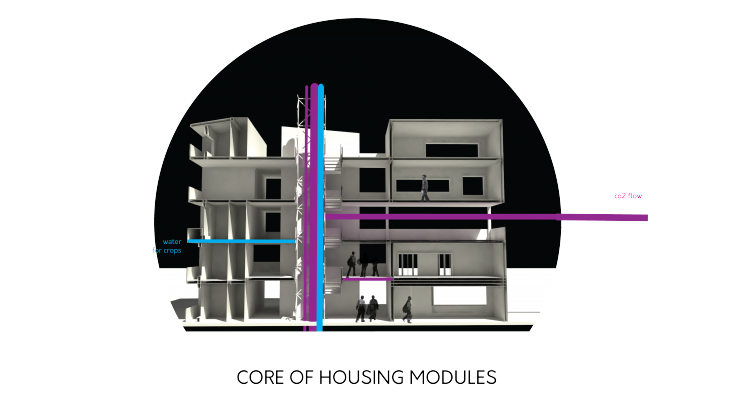
The masterplan proposed will deveop through several phases. Our strategy will start with existing empty spaces of the BDD chawls to primarily build the energy cores which will generate income to sustain the redevelopment plan. The housing building strategy will also expand through phases as the housing buildings will be built before the complete demolition of the district, therefore allowing the inhabitants to immediately move to there housing units.
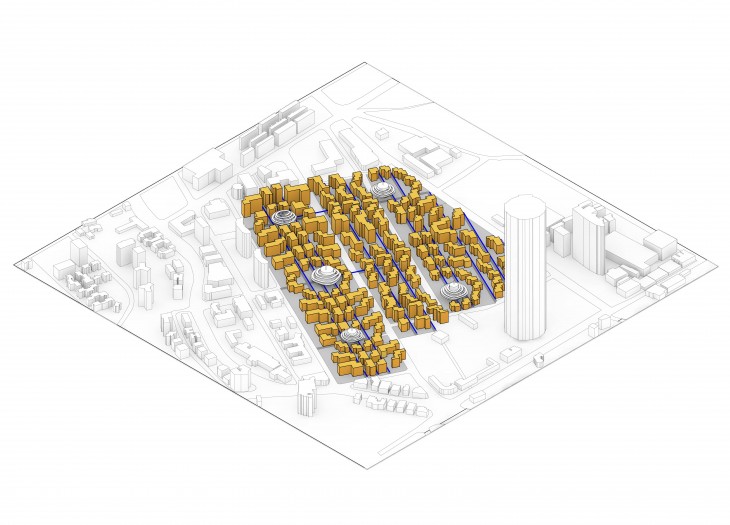
Collective Microgrid is a project of IaaC, Institute for Advanced Architecture of Catalonia developed at Master in Advanced Architecture in 2016 by:
Students: Ilkim Er, Mayra López, Seda Tugutlu and Sherine Zein
Faculty: Areti Markopoulou and Bruno Moser
Faculty Assistants: Marco Ingrassia and Angelos Chronis